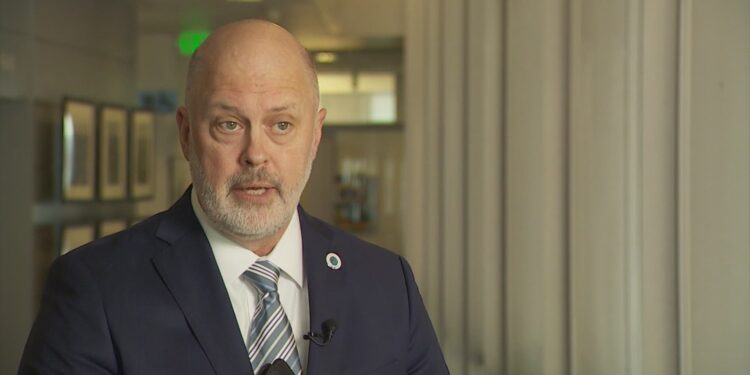Seattle city leaders are preparing to resist increased Immigration and Customs Enforcement activity following warnings from federal officials about potential enforcement surges in sanctuary cities.
Councilmember Bob Kettle, chair of the Public Safety Committee, said Seattle is addressing crime through local initiatives rather than relying on federal assistance. The city has advanced 24 pieces of public safety legislation alongside technological improvements including a real-time crime centre, CCTV systems, and automatic licence plate readers.
Kettle criticised federal enforcement tactics, comparing them unfavourably to Seattle police standards. “No face mask, no face coverings. They have to announce who they are,” he said. “They don’t come in all dressed tactical, dressed with face coverings. That’s not law enforcement.”
Council President Sara Nelson similarly opposed federal intervention, arguing it undermines Seattle’s community policing approach. “Not on our watch will ICE agents undermine our efforts to ensure everyone in every community across our city feels safe,” she said in a statement.
The Washington Immigrant Solidarity Network reports tracking ICE arrests at locations including 3rd Avenue and Pike Street in downtown Seattle, often involving agents in unmarked vehicles. These activities have created fear among immigrant communities that affects both urban and rural employment patterns.
Naomi Bailey, a White Center coffee stall manager, described witnessing an ICE arrest at a drive-through in July. “It’s terrible because we can’t do anything without them trying to do something,” she said. “I mean, I almost got arrested just yelling at them.”
Kettle argued federal agencies should focus on intercepting drugs and weapons along the I-5 corridor rather than immigration enforcement. “Our public safety challenges are driven by the fact that guns and drugs come into our city,” he said. “That’s what we need the federal government to be working on, ATF, FBI, DEA.”
The city lacks a specific response plan for increased ICE enforcement but officials vowed to pressure federal authorities to “stay in its lane.”
The dispute reflects broader tensions between local and federal law enforcement priorities. Seattle’s sanctuary city policies limit cooperation with immigration enforcement whilst federal officials argue such policies hamper national security efforts.
However, the effectiveness of either approach remains difficult to measure. Seattle officials cite their technological investments and legislative initiatives as evidence of local capacity, whilst federal authorities argue immigration enforcement requires coordinated national action beyond local capabilities.
The community impact appears significant regardless of enforcement effectiveness. Immigrant advocacy groups report that fear of detention affects workplace participation and community engagement, potentially undermining the economic integration that both local and federal officials claim to support.
For Seattle residents, the confrontation between city and federal authorities creates uncertainty about law enforcement priorities and resource allocation. The outcome may influence how other sanctuary cities respond to federal pressure whilst affecting immigrant communities’ willingness to engage with local institutions.






